 W
WThe exploration of North America by non-indigenous people was a continuing effort to map and explore the continent and advance the economic interests of said non-indigenous peoples of North America. It spanned centuries, and consisted of efforts by numerous people and expeditions from various foreign countries to map the continent. See also the European colonization of the Americas
 W
WSir Robert Barrie KCB, KCH was a British officer of the Royal Navy noted for his service in the War of 1812. He was helped early in his naval career by the patronage of his uncle, Sir Alan Gardner, who arranged for him to take part in the Vancouver Expedition. When the Pacific Coast was explored, he had served as a midshipman with Captain Vancouver in 1791.
 W
WLafayette Houghton Bunnell was an American physician, author, and explorer. He is most well known for his involvement with the Mariposa Battalion, the first non-Indians to enter Yosemite Valley, and his book Discovery of the Yosemite and the Indian War of 1851. Bunnell led the battalion members in a vote to name the valley, and for this reason he is often credited as the person who named Yosemite. He was also a soldier and surgeon in the United States war with Mexico and the Civil War.
 W
WWilliam Austin Burt was an American scientist, inventor, legislator, millwright, justice of the peace, school inspector, postmaster, judge, builder, businessman, surveyor and soldier. He first was a builder of sawmills, but his main interest was that of surveying. Burt built sawmills in an area that is now the city of Port Huron, Michigan. He built an excellent reputation for his accurate surveying work on public lands. He became a government deputy surveyor and trained many young men in several states how to become professional surveyors. Burt surveyed boundaries in the states of Michigan, Wisconsin, Minnesota, and Iowa starting as early as 1833. He involved his five sons in surveying and each became a government deputy surveyor.
 W
WJonathan Carver was a Captain in a Massachusetts Colonial unit, explorer and writer. After his exploration of the northern Mississippi valley and western Great Lakes region, he published a widely read account of his expedition, Travels through America in the Years 1766, 1767, and 1768 (1778).
 W
WWilliam Clark was an American explorer, soldier, Indian agent, and territorial governor. A native of Virginia, he grew up in prestatehood Kentucky before later settling in what became the state of Missouri. Clark was a planter and slaveholder.
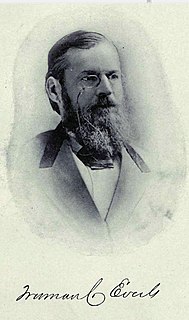 W
WTruman C. Everts was the first federal tax assessor for the Montana Territory and a member of the 1870 Washburn–Langford–Doane Expedition, which explored the area which later became Yellowstone National Park. He became lost in the wilderness for 37 days during the expedition and a year later became more widely known after writing about his ordeal for Scribner’s Monthly.
 W
WJohn Charles Frémont or Fremont was an American explorer, military officer, and politician. He was a U.S. Senator from California, and in 1856 was the first Republican nominee for President of the United States. He was an opponent of slavery.
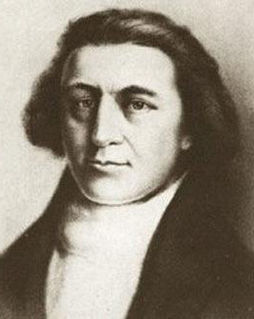 W
WRobert Gray was an American merchant sea captain who is known for his achievements in connection with two trading voyages to the northern Pacific coast of North America, between 1790 and 1793, which pioneered the American maritime fur trade in that region. In the course of those voyages, Gray explored portions of that coast and, in 1790, completed the first American circumnavigation of the world. He was noted for coming upon and naming the Columbia River in 1792, while on his second voyage.
 W
WJosiah Gregg was an American merchant, explorer, naturalist, and author of Commerce of the Prairies about the American Southwest and Northern Mexico regions. He collected many previously undescribed plants on his merchant trips and during the Mexican–American War after which he went to California. He reportedly died of a fall from his mount due to starvation near Clear Lake, California, on 25 February 1850 after a cross-country expedition which fixed the location of Humboldt Bay.
 W
WAugustine Herman, First Lord of Bohemia Manor was a Bohemian explorer, merchant and cartographer who lived in New Amsterdam and Cecil County, Maryland. In the employment of Cecil Calvert, 2nd Baron Baltimore, he produced a remarkably accurate map of the Chesapeake Bay and Delaware Bay regions of North America, in exchange for which he was permitted to establish an enormous plantation that he named Bohemia Manor in what is now southeastern Cecil County, Maryland.
 W
WLeonidas Hubbard Jr. (1872–1903) was an American journalist and adventurer.
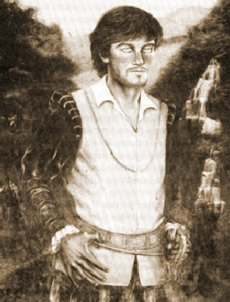 W
WFrancisco de Ibarra was a Spanish-Basque explorer, founder of the city of Durango, and governor of the Spanish province of Nueva Vizcaya, in present-day Durango and Chihuahua.
 W
WFerdinand Konščak was a Croatian Jesuit missionary, explorer and cartographer.
 W
WThe Age of Discovery, also known as the Age of Exploration, was a period in history starting in the early 15th century and continuing into the early 17th century during which Europeans engaged in intensive exploration of the world, establishing direct contacts with Africa, the Americas, Asia and Oceania and mapping the planet. Scientific matters at this time were of little interest as exploration was mostly commercially and politically motivated. Captivated by the lure of gold, silver and spices, Portuguese and Spanish sailors pioneered new trade routes to the Indies.
 W
WJohann Heinrich Lienhard was a Swiss immigrant to the United States. He left Switzerland at the age of 21. His memoirs for the years 1822 to 1850 are an important historical source regarding California Trail and Sutter's Fort in California from 1846 to 1850.
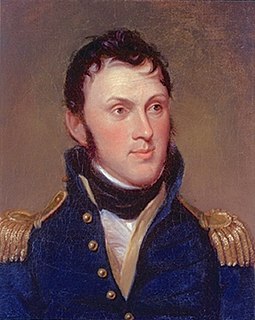 W
WStephen Harriman Long was a U.S. army explorer, topographical engineer, and railway engineer. As an inventor, he is noted for his developments in the design of steam locomotives. He was also one of the most prolific explorers of the early 1800s, although his career as an explorer was relatively short-lived. He covered over 26,000 miles in five expeditions, including a scientific expedition in the Great Plains area, which he famously confirmed as a "Great Desert".
 W
WLeroy Napoleon "Jack" McQuesten (1836–1909) was a pioneer in Alaska and Yukon as an explorer, trader, and prospector; he became known as the "Father of the Yukon." Other nicknames included "Yukon Jack," "Captain Jack," "Golden Rule McQuesten," and "Father of Alaska." Together with partners Arthur Harper and Captain Alfred Mayo, he founded Fort Reliance and a wide network of trading posts in the Yukon, often providing a grubstake to prospectors. He was the most successful financially of the trio, becoming a multi-millionaire by 1898 and buying a large Victorian mansion for his family when they moved about that time to Berkeley, California.
 W
WSimon McTavish, of Montreal was a Scottish-born fur trader and the chief founding partner of the North West Company. He was a member of the Beaver Club and was known as the Marquis for his pre-eminent position in the fur trade and his refined style of living.
 W
WPeter Skene Ogden was a British-Canadian fur trader and an early explorer of what is now British Columbia and the Western United States. During his many expeditions, he explored parts of Oregon, Washington, Nevada, California, Utah, Idaho, and Wyoming. Despite early confrontations with the Hudson's Bay Company (HBC) while working for the North West Company, he later became a senior official in the operations of the HBC's Columbia Department, serving as manager of Fort Simpson and similar posts.
 W
WZebulon Montgomery Pike was an American brigadier general and explorer for whom Pikes Peak in Colorado was named. As a U.S. Army officer he led two expeditions under authority of President Thomas Jefferson through the new Louisiana Purchase territory, first in 1805–1806 to reconnoiter the upper northern reaches of the Mississippi River, and then in 1806–1807 to explore the Southwest to the fringes of the northern Spanish-colonial settlements of New Mexico and Texas. Pike's expeditions coincided with other Jeffersonian expeditions, including the Lewis and Clark Expedition (1804–1806) and the Thomas Freeman and Peter Custis expedition up the Red River (1806).
 W
WJohn Wesley Powell was a geologist, U.S. Soldier, explorer of the American West, professor at Illinois Wesleyan University, and director of major scientific and cultural institutions. He is famous for the 1869 Powell Geographic Expedition, a three-month river trip down the Green and Colorado rivers, including the first official U.S. government-sponsored passage through the Grand Canyon.
 W
WJohn Scolvus or John of Kolno may have been a navigator of the late 15th century. It has been claimed he was among a group of early Europeans to reach the shores of the Americas prior to Columbus, arriving in 1476 as steersman of Didrik Pining, although this view is not supported by contemporary evidence, and as he is not mentioned contemporaneously, his identity and even existence have been disputed.
 W
WJedediah Strong Smith, was an American clerk, transcontinental pioneer, frontiersman, hunter, trapper, author, cartographer, and explorer of the Rocky Mountains, the North American West, and the Southwest during the early 19th century. After 75 years of obscurity following his death, Smith was rediscovered as the American whose explorations led to the use of the 20-mile (32 km)-wide South Pass as the dominant point of crossing the Continental Divide for pioneers on the Oregon Trail.
 W
WAlmon Harris Thompson, also known as A. H. Thompson, was an American topographer, geologist, explorer, educator and Civil War veteran. Often called "The Professor" or simply "Prof", Thompson is perhaps best known for being second in command of John Wesley Powell's Second Geographical Expedition (1871–1875), a federally funded scientific expedition that retraced the route of Powell's original expedition in order to further explore and map the drainages and canyons of the Green and Colorado Rivers in what is now southern Utah and northern Arizona. Thompson's diary of the expedition was originally published in the Utah Historical Quarterly in 1939. Through his work on the Powell expeditions and later as a geographer at the U.S. Geological Survey, he was responsible for naming many geographic locations in the Western United States. Thompson is also known for being a founding member of the National Geographic Society.
 W
WJames Larkin White, better known as Jim White, was a cowboy, guano miner, cave explorer, and park ranger for the National Park Service. He is best remembered as the discoverer, early promoter and explorer of what is known today as Carlsbad Caverns in Carlsbad Caverns National Park, New Mexico.
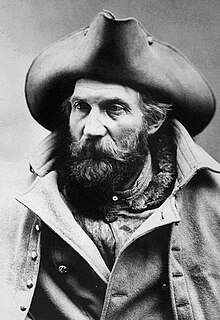 W
WHenry S. Yount was an American Civil War soldier, mountain man, professional hunter and trapper, prospector, wilderness guide and packer, seasonal employee of the United States Department of the Interior, and the first game warden in Yellowstone National Park. He was nicknamed "Rocky Mountain Harry Yount".